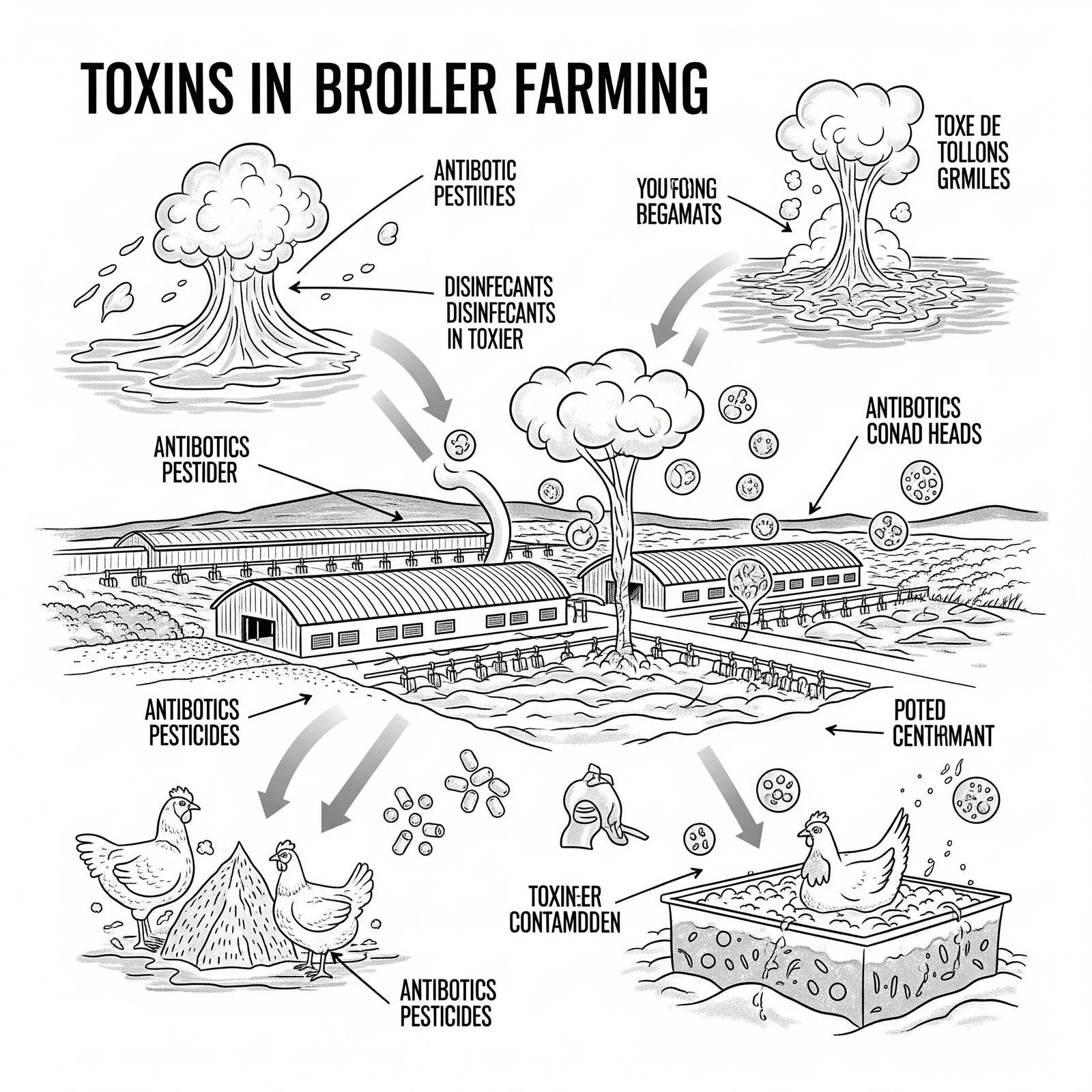Not all problems in broiler farming come with a loud symptom. Some creep in quietly, day by day, feed by feed. They don’t kill in a flash. They steal performance, margin, and predictability—slowly and invisibly.
Welcome to the world of toxins.
They’re not a “big issue” only when you see deaths.
They’re a big issue when your feed conversion slips, when uniformity breaks down, and when birds look “just a bit off” every single day.
What Are Toxins, Really?
In broiler farming, the word “toxin” often gets boxed into one category: mycotoxins. And yes, they’re important—produced by fungi like Aspergillus, Fusarium, and Penicillium, hiding in feed ingredients.
But toxins are more than just mold:
- Biogenic toxins: From bacterial die-off in poorly stored feed.
- Endotoxins: Released inside the bird’s gut due to dysbiosis.
- Ammonia & environmental toxins: From excessive nitrogen breakdown in litter.
- Chemical residues: From poor-quality premixes or contamination.
Each of these may not kill—but they always tax the bird.
How Toxins Whisper, Not Shout
Toxins don’t act like viruses. There’s no outbreak. No sudden spike in mortality.
Instead, they chip away at the bird’s engine:
- Liver fatigue → reduced detoxification → reduced digestion.
- Immunosuppression → higher susceptibility to IB, E. coli, Clostridium.
- Reduced villi height in gut → poor nutrient absorption.
- Disrupted gut flora → wet droppings, secondary enteritis.
- Oxidative stress → poor feathering, dull combs, lethargy.
You’ve seen this: Birds that eat but don’t convert. Flocks that never fully catch up. It looks like “just bad performance”—but it’s often subclinical toxicity.
Invisible, But Measurable
When toxins are at play, you might observe:
- Uniformity drops by 5–10% across the flock.
- FCR creeps up by 0.1–0.15, even when feed quality seems “OK”.
- Mortality stays within limits, but culls rise steadily after week 2.
- Increased need for antibiotics, particularly for gut or respiratory issues.
- Unexplained condemnations due to liver damage or airsacculitis.
Even your vaccine response weakens—because a stressed immune system doesn’t retain what you inject.
Not Just a Rainy Season Problem
One mistake farms make is seasonal thinking: assuming toxins are a monsoon issue.
But storage conditions, raw material sourcing, feed bin hygiene, even the water birds drink, can introduce toxins year-round.
A bag of feed stored improperly for 2 days in summer can do more damage than you think.
What You Can Do (Beyond Just a Binder)
Binders are important—but they’re not magic. Toxin management is about anticipation, not reaction.
- Know your raw material risks – Test, trace, and rotate sources.
- Support the liver – Natural hepatoprotectants (like silymarin, betaine, choline) reduce stress load.
- Use gut flora modulators – A healthy gut neutralizes many endotoxins before damage happens.
- Don’t neglect storage hygiene – Clean bins, manage moisture, ensure proper FIFO practices.
- Train your team – Lethargy, dull birds, and patchy growth aren’t always “feed change issues”—they might be toxicity symptoms.
Conclusion: Toxins Don’t Need to Kill to Hurt
In broiler production, we often focus on what we can see: weights, mortalities, grades.
But toxins work in the blind spots—stealing margin in slow, steady bites.
They don’t always shout. But they always cost.
And the best farms aren’t the ones who react to visible toxin damage.
They’re the ones who never let it happen in the first place.

